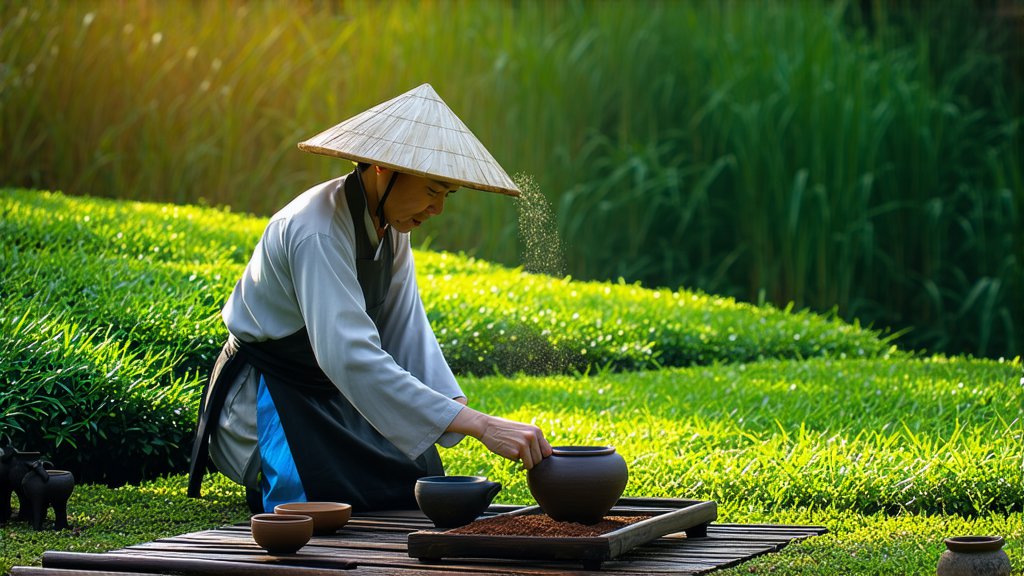
In the vast and diverse landscape of Chinese tea culture, one category stands out for its rich flavor and deep amber hue—Chinese Black Tea. This variety, also known as "hong cha" in Mandarin, has captivated tea enthusiasts worldwide with its unique characteristics and storied history. Join us on a journey to explore the depths of this golden elixir, delving into its origins, varieties, intricate production process, and the art of tasting that elevates it beyond mere beverage status.
A Historical Brew: The Roots of Chinese Black Tea
The tale of Chinese black tea is steeped in ancient lore, with its roots tracing back to the Tang Dynasty (618-907 AD). However, it wasn't until the Ming Dynasty (1368-1644 AD) that black tea production gained prominence, particularly in the Fujian province. Legend has it that the discovery of black tea was accidental, when tea leaves left to oxidize before drying produced a distinct dark color and robust flavor. This serendipitous find led to the development of a new tea category, which soon became highly prized for its medicinal properties and later, its delightful taste.
Diverse Varieties: From Lapsang Souchong to Keemun
Chinese black tea encompasses a wide range of styles, each with its own unique terroir, processing methods, and flavor profiles. Among the most renowned are:
-
Lapsang Souchong: Often referred to as the 'Smoky Black Tea', this tea originated in the Wuyi Mountains of Fujian. Its production involves smoking the leaves over pinewood fires, imparting a distinctive smoky aroma and flavor that is both bold and intriguing.
-
Keemun (Qimen): Hailing from Anhui province, Keemun tea is celebrated for its floral notes and smooth texture. It undergoes a meticulous process of rolling and oxidation, resulting in tightly twisted leaves that unfurl gracefully in hot water.
-
Dian Hong: Also known as Yunnan Red, Dian Hong comes from the Yunnan province and boasts a full-bodied flavor with hints of malt and honey. Its large leaf grade contributes to its robust character.
-
Golden Monkey: Another gem from Fujian, this tea is named after the golden tips on its leaves, resembling a monkey's fur. It offers a complex profile with sweet, fruity undertones and a lingering finish.
Craftsmanship: The Art of Making Chinese Black Tea
The transformation of fresh tea leaves into fine Chinese black tea is an art form requiring precision and expertise. Here's an overview of the traditional steps involved:
-
Withering: Freshly picked leaves are spread out to wilt under the sun or in controlled environments, reducing moisture content and preparing them for further processing.
-
Rolling: Leaves are rolled either manually or mechanically to break down cell walls, releasing enzymes that facilitate oxidation. This step also shapes the leaves and enhances their aroma.
-
Oxidation (Fermentation): Rolled leaves are spread out again to allow enzymatic reactions with oxygen, turning the green leaves brown and developing complex flavors. The duration varies depending on the desired level of oxidation.
-
Drying: Finally, the leaves are dried to remove any remaining moisture, preserving their quality and preventing spoilage. This can be done by sun drying or using specialized equipment.
-
Sorting and Grading: Once dried, the tea is sorted based on leaf size and quality, ensuring consistency and enhancing aesthetic appeal.
The Art of Tasting: Savoring the Essence of Chinese Black Tea
Tasting Chinese black tea is an experience that engages all senses. Here's a guide to appreciate its nuances fully:
-
Warm Up: Begin by warming your teapot and cups with hot water to maintain the optimal temperature for brewing.
-
Measurement: Use approximately 3 grams of loose leaf tea per 200ml of water for a balanced flavor.
-
Water Temperature: For most Chinese black teas, use near-boiling water (around 95°C/203°F), except for delicate varieties like Golden Monkey, which may prefer slightly cooler temperatures.
-
Steeping Time: Start with a short steep time of about 2-3 minutes, adjusting based on personal preference and the specific tea's strength. Longer steeping times can intensify flavors but may also introduce bitterness.
-
Observation: As you pour the tea, notice its color, clarity, and any subtle changes throughout the session. A good black tea should have a bright, clear liquor.
-
Aroma: Inhale deeply before sipping to capture the tea's fragrance. Each variety offers a unique bouquet, from smoky and earthy to floral and sweet.
-
Tasting: Take small sips, allowing the tea to coat your palate. Pay attention to the initial taste, mid-palate flavors, and the aftertaste or 'finish'. A well-balanced black tea will have a harmonious blend of complexity without being overpowering.
-
Re-steeps: Many Chinese black teas can be resteeped multiple times, revealing different layers of flavor with each infusion. Adjust steeping times accordingly for subsequent brews.
In conclusion, Chinese black tea is more than just a drink; it's a cultural heritage, a testament to centuries of refinement in tea cultivation and craftsmanship. Whether you're drawn to the smoky allure of Lapsang Souchong, the floral elegance of Keemun, or the robust depth of Dian Hong, each cup tells a story of its terroir, tradition, and the hands that crafted it. So, embark on this sensory journey, savoring every sip of and appreciating the artistry behind this golden elixir that continues to enchant tea lovers around the globe.